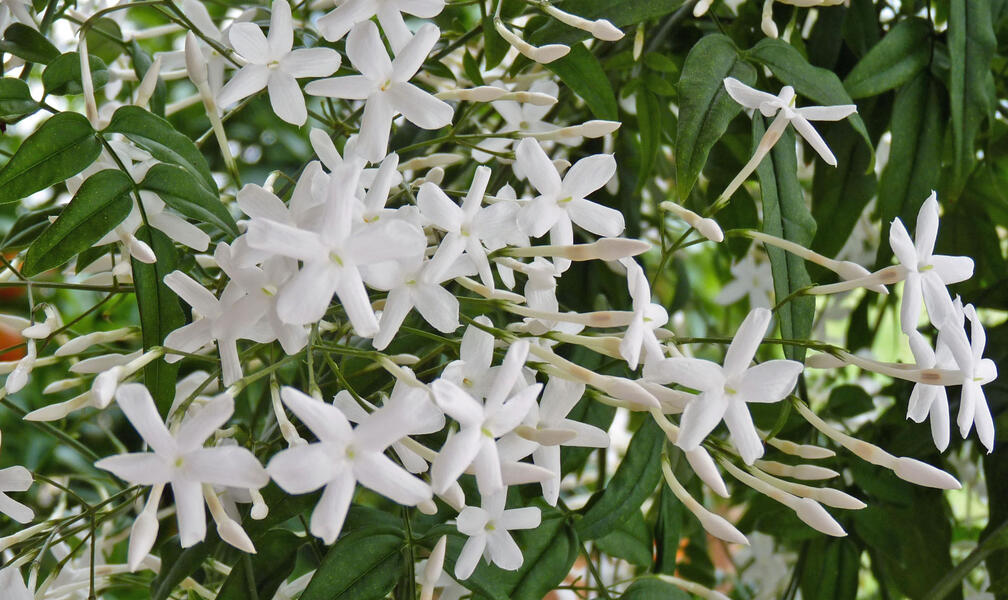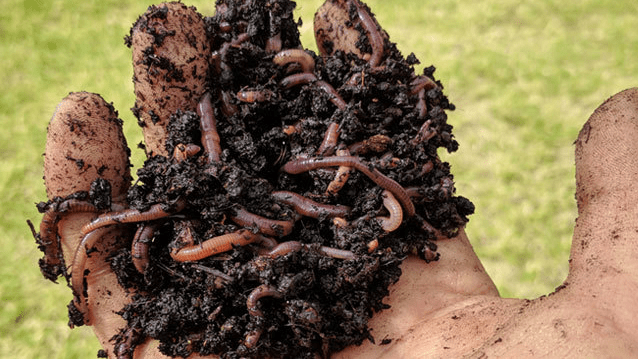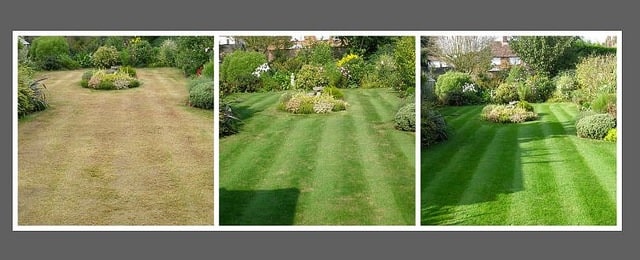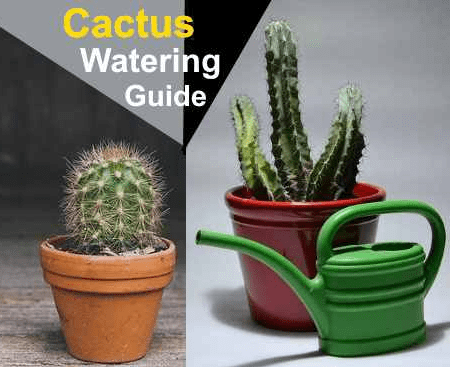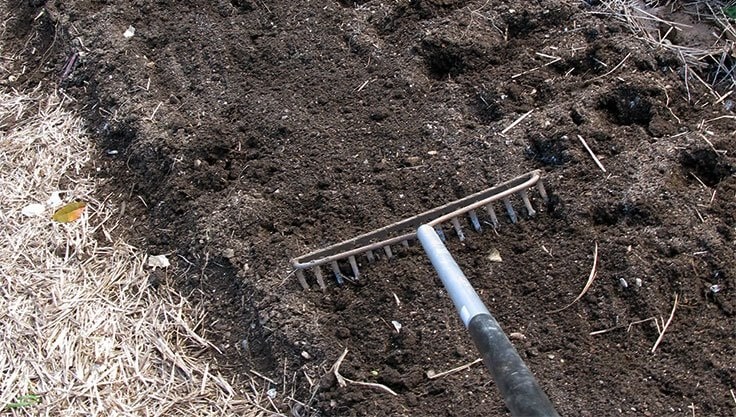Pruning Jasmine: How to Successfully Trim It
Jasmine is a popular garden plant, but not always hardy. How and when I prune it depends on the variety. However, the approach is generally similar, even for Philadelphus, the False Jasmine, which shares only its name and flower shape with True Jasmine.
Pure white flowers, a pleasant scent, and overall low maintenance: Jasmine is no wonder one of the most beloved shrubs in gardens. The mostly hardy plants thrive in any garden, love sunny spots, and can be kept in bloom with regular pruning. Popular jasmine varieties include True Jasmine (Jasminum officinale) and Winter Jasmine (Jasminum nudiflorum), as well as the so-called False Jasmine, also known as European Mock Orange (Philadelphus coronarius). The varieties of False Jasmine are all hardy and so robust that they grow in any garden soil. Even without pruning, they naturally form relatively narrow, upright crowns and can grow between two and four meters high. Regular pruning ensures more blooms over time for all of them.
Contents
Pruning Jasmine: Key Points
The best time to prune jasmine is after the flowering season. Whether it’s True Jasmine (Jasminum officinale), Winter Jasmine (Jasminum nudiflorum), or False Jasmine (Philadelphus): Regular thinning cuts prevent the shrubs from becoming bloom-fatigued or sparse. Well-maintained shrubs can be shaped or rejuvenated with a strong cut. I only prune False Jasmine every two to three years, and I spread the rejuvenation pruning over two years.
How to Prune True Jasmine
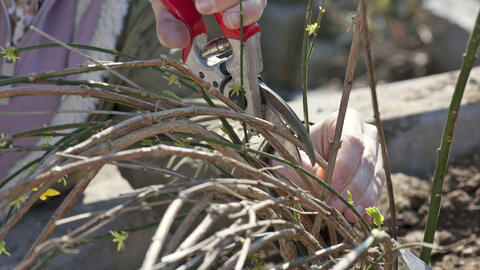
True Jasmine (Jasminum officinale) is a fast-growing climbing plant. However, it is not winter-hardy and survives the winter in the garden only in milder areas or with appropriate winter protection. Otherwise, it is well-suited for conservatories or pots, which I can place in a frost-free but cool area for wintering. Its flowering period lasts from June to September, and the white flowers have an irresistibly fragrant scent, often used to make essential oils. Tip: I can place the potted jasmine near seating areas in the summer to fully enjoy its scent.
However, older shoots of True Jasmine can quickly become bloom-fatigued, often after just a few years. This can be easily prevented with regular pruning to thin out the plant. I can’t go wrong with the pruning; even a very strong cut will encourage the plant to sprout again. I prefer to prune True Jasmine right after flowering. I remove any long shoots that grow beyond the trellis or are in the way. Since True Jasmine is mildly toxic, I always wear gloves while pruning.
Pruning Winter Jasmine
Winter Jasmine (Jasminum nudiflorum) is a climbing plant that can grow up to three meters tall with strongly overhanging shoots and yellow flowers that appear between January and March. The plant requires a trellis and needs regular pruning since Winter Jasmine only blooms on new shoots. Without regular thinning, the plants accumulate a lot of old and dead wood in the interior, eventually leading to sparse growth.
If some shoots have frozen during the winter, I prune these, as well as any obviously damaged branches. The best time to prune Winter Jasmine is in spring, specifically after the blooms in March. I cut all the faded shoots back by a third, leaving a suitable branching point. I leave three or five buds on the framework shoots. If needed, I tie the new shoots to the trellis. Every two or three years, I should also prune some of the framework shoots back to a young shoot near the base of the plant.
Can Winter Jasmine Be Rejuvenated?
A Winter Jasmine that hasn’t been pruned for a long time is difficult to bring back into shape, as it is reluctant to regenerate after a severe pruning. If it’s completely unkempt, I recommend replacing it with a new plant. However, even after many years, I can still rejuvenate Winter Jasmine by giving it a new foundation. To do this, I prune the plant completely back to 50 to 60 centimeters above the ground.
How to Prune False Jasmine
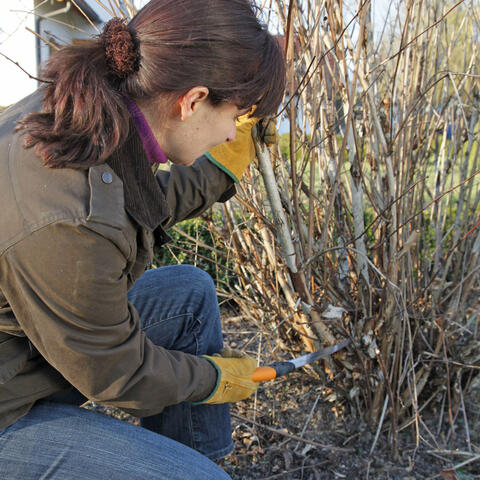
False Jasmine, also known as Mock Orange (Philadelphus), is a flowering shrub that can grow up to four meters tall. Depending on the variety, either double or simple flowers appear in June. The plants continuously produce new branches from their base but become so dense after four or five years that they become bloom-fatigued. Regular thinning helps prevent this, and a strong cut will bring older plants back into form. Annual pruning is not necessary, but I prune False Jasmine every two to three years right after flowering.
I remove about a quarter of the older shoots, cutting them just above the ground or shortening them to a young new shoot near the base. I can identify older branches by their rough, wrinkled bark. I avoid cutting shoots with smooth bark, as these will bloom the following year.
If the plants are spreading too much, I can simply cut back the outer shoots near the ground. For varieties with variegated leaves, I prune some of last year’s shoots in early spring at a lower branching point. This enhances the intensity of the leaf color, but this cut does sacrifice some blooms.
I can also rejuvenate False Jasmine by cutting it back radically. However, I prefer to spread the cut over two years, pruning half of all shoots back to the ground the first year.

